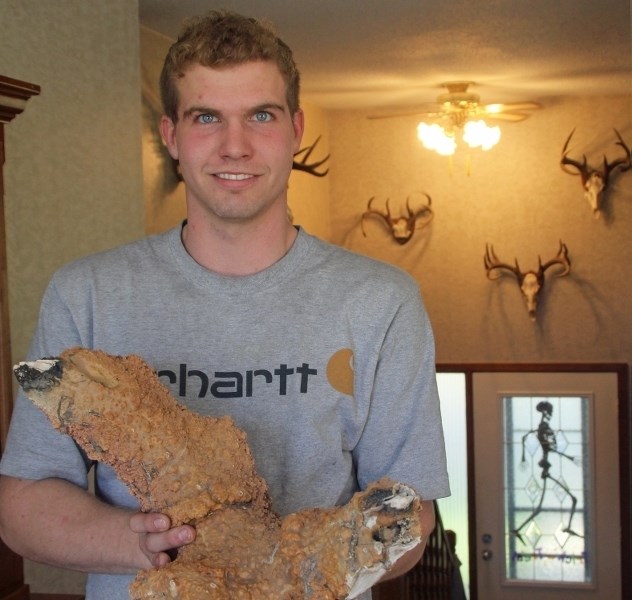Kevin Graham Rugg has a perspective of the Lakeland most us will never have.
An underwater perspective, that is. Originally from St. Albert, the 24-year-old made Bonnvyille his home over four years ago and has dived lakes in the vicinity over 60 times.
If that doesn't impress, his stash of diving memorabilia will. Over the course of his dives, he has found everything from 1950s pop bottles to all sorts of sunglasses to a whole buffalo skull sitting on a lakebed. He keeps all his collectibles in a cabinet in his house as mementos to his most memorable dives.
Animal bones are a particular favourite. The massive buffalo skull Rugg found hangs over a fireplace in his house. He proudly points to a heavy set of elk antlers he picked up from 25 feet underwater in Cold Lake. His theory for how both animals got there is quite straightforward – he believes they fell through the ice during winter.
Rugg went diving for the first time during a trip to Mexico. Instantly hooked, once back in Canada he jumped at the opportunity to go diving in the Lakeland when a friend and fellow diver asked. He completed his diving courses at a now-defunct diving store in Edmonton, bought scuba equipment worth approximately $2,000 in St. Paul and took the plunge at a lake near the store.
“The lake wasn't what I excepted it to be, it was all rocks as far as you could see,” says Rugg. “Every dive after that was totally different.”
Cold Lake, Marie Lake, Beartrap Lake, Moose Lake, Stoney Lake and Lac Bellevue are all familiar waters for Rugg and his diving friend. They go in pairs, as the dry-suit is too heavy and difficult for one person to put on. They walk up from the shore around 90 percent of the time, sometimes diving almost a 100 feet deep.
But Rugg says it's not all about the depth.
“Some of my very best dives have been in three feet of water,” he explains. “I saw hundreds and hundreds of fish and they're, like, right upfront. You can swim right over top of them and they're not afraid or anything.”
Visibility varies from lake to lake. He recalls being able to see 30-feet during a dive in Marie Lake. Other times you can barely see your own hand in front of your face, especially during night dives, which Rugg particularly enjoys.
The thrill seeker has also had a few hair-raising experiences. Once, after rowing out to the Cold Lake water intake system in a dingy, he tied off to a buoy and went close to 70-feet down. By the time he and his friend were halfway up, the chain began to move up and down, indicating there were waves above them. By the time they resurfaced, threw their stuff back into the boat, they had to make a quick dash to shore with the wind pushing them in the opposite direction.
“We came with the little dinghy crashing up on the rocks and stuff but it was a lot of fun,” said Rugg, laughing.
However, there is one lake Rugg is no hurry to dive anytime soon. He has no plans to dive Jessie Lake, noting there's too much unidentifiable sludge that sits at the bottom. Barring Jessie Lake, he is open to exploring lakes in adjacent counties.
As a welder, Rugg hopes to also someday work on underwater welding projects, combining his two passions. In the meantime, he plans on continuing diving and pulling out pieces of Lakeland history every opportunity he gets.



